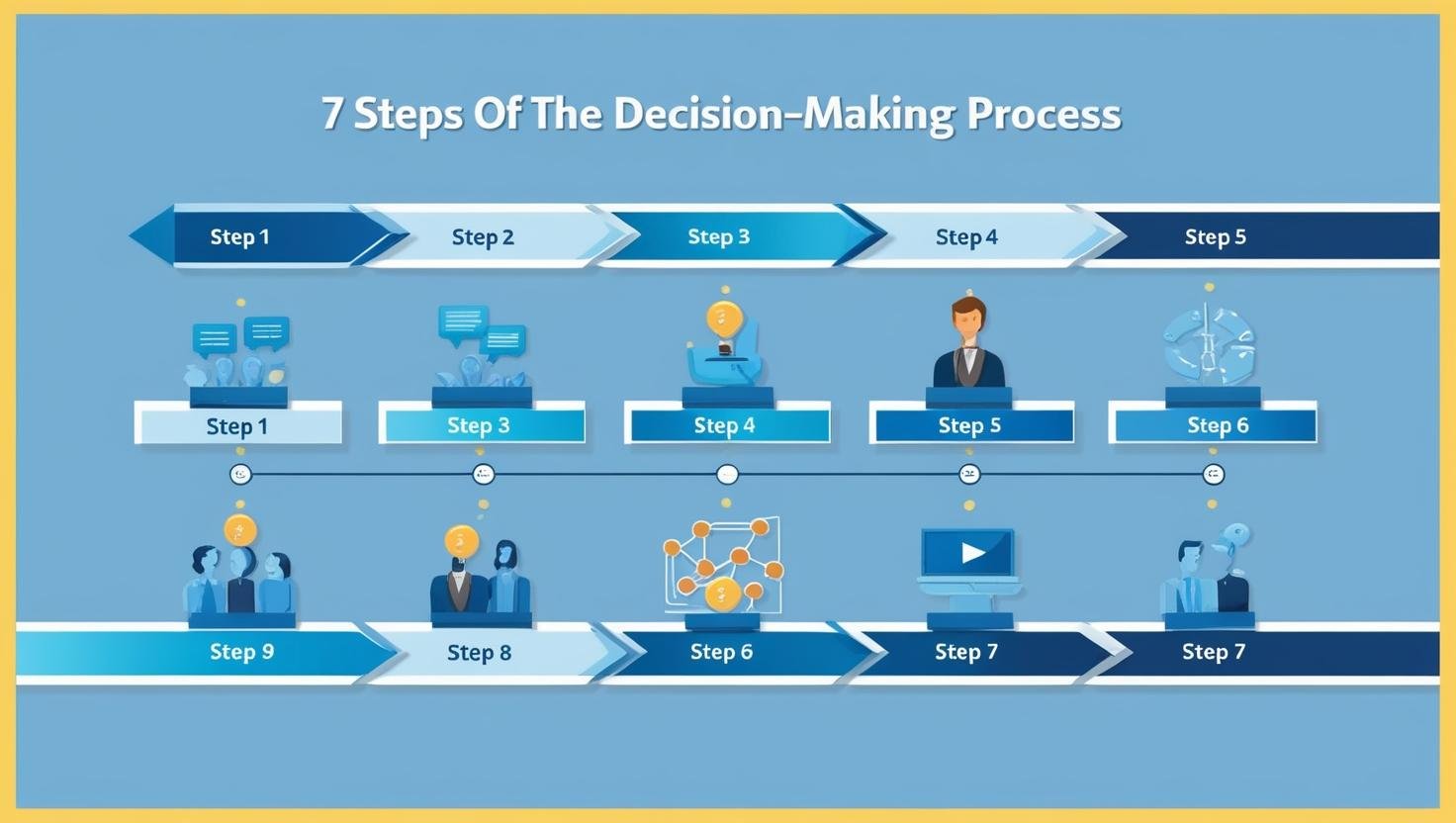FAQs
Why do so many Aussie businesses struggle with decision-making?
Because it’s not just about data and deadlines—it’s about balancing people, priorities, and pressure. Business in Australia is dynamic, often fast-moving, and full of unknowns. Without a clear system to guide choices, decision-making can feel like throwing darts in the dark.
Is there a proven formula to make better decisions?
There is. The 7-step decision-making process isn’t some corporate gimmick—it’s used by some of the most successful businesses worldwide, and for good reason. It turns gut feelings into guided actions.
Can software actually help make decisions easier?
Yes—and not in the robotic way you might think. The right software acts like a digital co-pilot. It helps you track info, test ideas, manage input from your team, and stay accountable to the decisions you’ve made.
What separates a ‘meh’ decision from a truly great one?
A good decision solves a problem. A great one fuels growth, builds trust, and strengthens your team’s confidence. The difference is often just a few extra steps in thinking things through.
Why This Process Matters More Than You Think
Let’s be real—whether you’re the founder of a fast-scaling startup in Melbourne, a marketing manager in Brisbane, or running an NDIS consultancy in regional NSW, you’re constantly faced with decisions. Some are small (what should go on today’s to-do list?) and others are mammoth (should we expand into a new market?).
But here’s the thing: it’s not the size of the decision that matters. It’s how you make it.
If you’re winging it every time, it’s easy to miss key info or get caught up in “what ifs.” On the flip side, if you’ve got a repeatable process in place—something structured but flexible—you’ll move faster and feel more confident in your choices.
In this guide, we’ll walk you through the 7 steps of the decision-making process, sprinkle in some real Aussie business examples, and show how platforms like Promate Software can support you at every turn.
Step 1 – Identify the Decision
Every strong decision starts with a clear understanding of what you’re deciding.
This might sound obvious, but you’d be surprised how many teams dive into problem-solving without first nailing down the actual problem. Vague decisions lead to vague outcomes.
Example from the field:
Let’s take Julie, who runs a boutique branding agency in Adelaide. She notices her team’s productivity has taken a dive. Her instinct? Get them new laptops. But after stepping back, she realises the real decision isn’t about tech—it’s about how to improve daily workflow. That subtle shift totally changed her approach (and saved her thousands).
Tip: Write down the decision in a single sentence: “I need to decide whether to X or Y.” If it’s longer than that, you probably need to refine it.
Step 2 – Gather Relevant Information
This is where you do your homework—but not too much.
You’re looking for just enough data to make an informed choice without getting overwhelmed. That could mean running a customer survey, checking last quarter’s reports, or even simply talking to your team on the ground.
Aussie example:
A retail chain in Perth wanted to trial shorter weekend hours to save costs. Before making a move, they used foot traffic data, online reviews, and POS sales reports—all accessed through integrated dashboards. The result? A decision backed by facts, not just feelings.
Where Promate fits in:
Promate Software’s data visualisation features help you see what’s working, what’s not, and what needs a second look—all from one dashboard. No spreadsheets needed.
Step 3 – Identify the Alternatives
Once you understand the situation, it’s time to brainstorm potential paths forward.
This stage is often where creativity lives. The goal isn’t to lock in the best answer right away—it’s to explore the landscape of possibilities. Think of it as whiteboarding for your brain.
Hypothetical scenario:
You run a growing wellness brand based out of Gold Coast. You’re thinking about how to handle rising shipping costs. Alternatives might include:
- Switching couriers
- Charging a flat delivery fee
- Offering free shipping only over a threshold
- Partnering with local pick-up hubs
Tip: Involve others at this point. Your teammates, staff, or even customers can spark alternatives you hadn’t considered. Promate’s built-in team collaboration boards are ideal for mapping these out without long email threads.
Step 4 – Weigh the Evidence
Now you’ve got your options, it’s time to test them. Look at the potential risks, rewards, and practicalities of each choice.
This is the heart of the making decision process. You’re applying logic to your creativity.
Case in point:
A Brisbane-based startup was choosing between hiring in-house developers or outsourcing to a local agency. By building out cost models, timeline projections, and capacity needs, they found outsourcing would be cheaper short-term but limit flexibility. Weighing these facts led them to hire a part-time contractor instead—right in between both options.
How Promate helps here:
With scenario planning tools, you can test outcomes, create projections, and run “what if” simulations—ideal when there’s a lot riding on your next move.
Step 5 – Choose Among Alternatives
Here’s where you make the actual decision.
All the groundwork you’ve done so far leads to this point. It’s easy to get cold feet—but remember, indecision is still a decision. The key is to choose deliberately, not reactively.
What helps?
Refer back to your original problem statement. Which option best solves that? Which one aligns with your goals, values, or bottom line?
True story:
When one Melbourne SaaS firm chose between investing in marketing or customer service, they ultimately prioritised retention. Why? Their data showed existing users were leaving due to poor support—not lack of visibility. Making decision based on facts gave them the confidence to act fast.
Step 6 – Take Action
A decision without execution is just a dream.
Here’s where the rubber meets the road. You’ll need an action plan, clear responsibilities, and follow-through. Make sure everyone involved knows the who, what, and when.
Common struggle:
We’ve all been in meetings where something’s decided… and then forgotten. No one owns the next steps. Momentum dies.
Promate’s solution:
With Promate’s project management tools, every task can be assigned, scheduled, and tracked. You can even automate reminders and check-ins to keep things moving.
Tip: Don’t wait for “perfect” timing. Done is often better than delayed.
Step 7 – Review Your Decision
This step is often skipped—and that’s a shame.
Reviewing the decision gives you priceless insight. It tells you whether your process worked, what surprised you, and how you can do better next time.
Example:
A construction firm in Hobart chose to switch suppliers to cut costs. Six months in, they reviewed the impact: material quality had dropped, causing delays. They went back to their original supplier but added a pricing negotiation process. The result? Quality and savings.
Promate’s bonus feature:
Our software supports retrospective tracking. You can log what worked, what didn’t, and build custom templates for next time. Learning from the past shouldn’t take hours—it should take minutes.
Why Choose Promate Software
At Promate, we understand the everyday challenges of decision-making in Aussie businesses. Whether you’re running a lean startup or managing a sprawling operation, the pressure to choose well—and fast—is real.
Our platform is purpose-built to support every step in the decision making process. Here’s how:
- Step 1: Use dashboards to monitor business health and uncover decisions early
- Step 2: Pull real-time data to eliminate guesswork
- Step 3: Collaborate easily to identify creative solutions
- Step 4: Simulate and forecast outcomes with ease
- Step 5: Make confident calls with structured planning tools
- Step 6: Execute seamlessly with task tracking and automation
- Step 7: Review and refine for future success
We’re more than software—we’re a decision-making sidekick for every Australian business leader who wants to lead with clarity.
Call to Action – Make Better Business Decisions, Starting Today
The reality is, most businesses aren’t short on ideas—they’re short on clarity.
If you want to stop second-guessing and start building momentum, it’s time to get serious about your decision-making framework. And Promate Software is here to help.
With tools built for the full decision making process, you can move faster, reduce stress, and rally your team around every choice you make.
Ready to turn confusion into clarity?
Explore Promate Software today at https://promatesoftware.com.au and see how we can help you transform your next decision into your smartest one yet.




